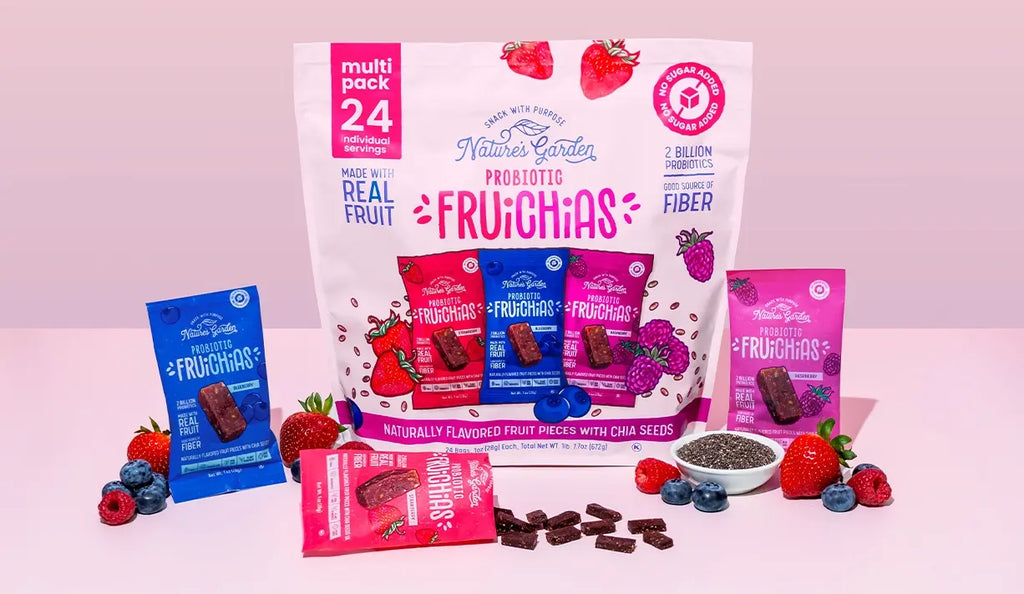Navigating the delightful labyrinth of parenthood is an enriching journey, riddled with questions, especially when it comes to nourishing your little one. One such question of interest: "When and how do I introduce nuts to my baby?" If this has been lingering in your thoughts, you're in the right place!
What Age Should Babies Try Nuts?
Nuts, nature's tiny powerhouses of nutrition, can be introduced to babies as early as six months, aligning with when many babies start solids. But remember, as with any food introduction, it’s always best to consult with your pediatrician first.
Why Introduce So Early?
Early introduction, particularly of allergenic foods like nuts, can potentially reduce the risk of food allergies later on. Recent studies suggest that timely introduction can make a difference. Parents have noticed that early exposure might just be the trick to nurturing a more adventurous eater. However, while some babies may be ready at six months, others might take a bit longer, showing readiness closer to their first birthday. Observing your baby's cues is crucial.
Commonly Introduced Nuts for Babies
When introducing nuts to your baby's diet, it's essential to know which nuts are often introduced first and which ones might be more allergenic than others. Here's a simple table to guide you:
| Nut Type | Common Age of Introduction | Notes |
|---|---|---|
| Almonds | 6-8 months | Often introduced in the form of almond butter. |
| Cashews | 6-8 months | Creamy texture makes it suitable for early introduction. |
| Walnuts | 8-10 months | Can be a bit bitter, best mixed with sweeter foods. |
| Pistachios | 8-10 months | Ensure they are unsalted and finely ground. |
| Hazelnuts | 10-12 months | Best introduced after the more common nuts. |
| Pecans | 10-12 months | Introduce as ground or in butters. |
| Brazil nuts | 12+ months | Larger and can be harder, wait until older. |
| Macadamia nuts | 12+ months | Introduce in butter form or finely ground. |
The timeline provided in the table is based on general practices and recommendations, but individual experiences can vary. When introducing nuts or any allergenic foods to babies, it's important to always consult with a pediatrician or registered dietitian who can provide guidance tailored to a child's specific needs and circumstances.
Safe Introduction of Walnuts to Your Baby's Diet
When introducing walnuts to your little one, it’s crucial to ensure they are prepared safely to prevent choking and facilitate easier digestion. Start by offering finely ground walnut powder, which can be sprinkled onto purees or mixed into oatmeal. As your baby grows and becomes more comfortable with different textures, you can gradually move on to offering walnut butter, ensuring it is spread thinly to avoid any choking hazard. Always observe your baby closely when introducing any new food and consult with your pediatrician if you have any concerns. For more detailed guidance and tips, check out this comprehensive guide on safe ways to give walnuts to babies to avoid any potential choking hazards. Introducing walnuts in this safe and gradual manner can be a great way to enhance your baby’s diet with the nut's valuable nutrients.
How to Prepare Nuts Safely for Your Toddler?
Ensuring the safety of nuts for your child requires a blend of preparation, awareness, and patience.
Making Nuts Digestible for Babies
-
Choose the Right Nuts: Begin with raw, unsalted nuts. Almonds, cashews, and walnuts are good options as they are generally softer and easier to process. Avoid nuts that are heavily seasoned or roasted in oil.
-
Grind to Perfection: Using a food processor or a quality blender, grind the nuts into a fine powder. This will not only eliminate any choking hazard but also make it easier for the baby's immature digestive system to break down.
-
Mix with Baby's Food: You can mix the ground nuts with your baby's favorite purees, oatmeal, or yogurt. Start with a small quantity to monitor for any allergic reactions and gradually increase the amount as your baby gets accustomed to the new texture and flavor.

Common Preparation Methods
- Ground Nuts: Use a food processor to create a fine powder that can be added to yogurts, porridges, or fruit purees.
- Nut Butters: Opt. for creamy versions without added sugars or salt. Remember to spread thinly to avoid choking hazards. When choosing nut butters, parents should also consider varieties fortified with added nutrients or those that come with reduced salt and sugar content.
The No-No's for Tiny Tots
- Whole nuts shouldn’t be given to children under five due to choking risks.
- Avoid sugar-coated or salted nuts. Natural is the way to go!
The Nutty Timeline: A Progressive Approach
Introducing nuts is not just about the 'how', but also the 'when'. Gradual exposure can not only minimize risks but also enhance your child's acceptance of these nutritious tidbits.
The First Encounter
For the very first introduction, pick a time when your baby is well-fed and in a good mood. This ensures that their first experience is pleasant, setting the stage for future explorations.
Routine Inclusion
Once you've introduced a variety of nuts and ensured there's no allergic reaction, make them a routine part of their diet. From sprinkling them on breakfast cereals to incorporating them in desserts – the possibilities are endless.
Evolving Tastes
As your toddler grows, their taste preferences will evolve. What they might reject now, they might love in a few months. So, if the first introduction doesn't go as planned, don't be disheartened. Give it some time and reintroduce.
Ensuring Allergen Safety
It's imperative to tread carefully here. Allergies can be unpredictable. Introducing nuts in controlled environments, where parents can observe and react, is the best strategy.
Gradual Introduction
Introduce one nut variety at a time, with a waiting period of 5-7 days before introducing another. This helps in identifying any allergic reactions specific to a nut type.
Signs of Allergic Reactions to Monitor
- Rash or hives
- Vomiting or diarrhea shortly after eating
- Swelling of the face, especially the lips or eyes
- Sneezing or a runny nose
- Sudden fatigue or unusual fussiness
What to Do if a Reaction Occurs?
Stop feeding the nut immediately, monitor symptoms, and consult your pediatrician. If the reaction is severe, seek emergency care.
Nuts as a Pillar in a Balanced Diet
With their nutrient-rich profile, nuts should be a part of your child’s diverse diet. Their introduction is just the beginning of a culinary adventure that, with guidance, can make mealtime fun and nutritious.
Nutritional Boon: Nuts offer proteins, healthy fats, vitamins, and minerals. They're an energy-packed snack perfect for growing toddlers.
Moderation is Key: Due to their high-calorie count, ensure they're not the sole snack but a part of a wider nutrient intake.
Making Nuts Appealing for Little Palates
For some children, the textural journey of nuts might be off-putting at first.
Creative Incorporation
- Nutty Banana Pancakes: Ground almonds or walnuts can be a delicious addition.
- Smoothies: A spoonful of almond or cashew butter adds creaminess.
- Nutty Dips: Perfect with freshly cut fruits or veggies.

Diversifying Your Baby's Diet
While nuts are an incredible source of nutrition, they're just one of the many options available for your little one. As parents, we constantly seek out a diverse range of healthy food choices to ensure balanced nutrition. If you're looking to expand your baby's palate further, our guide on Healthy Organic Snacks for Babies offers an array of tasty and nutritious options. Not only does it provide insight into the benefits of organic foods for infants, but it also gives a wholesome snacking choices for your baby's growing appetite!
The Final Nutty Nugget
The journey of introducing nuts is a blend of science, art, and a sprinkle of patience. As with all things parenting, trust your instincts, arm yourself with knowledge, and watch your child embark on a delightful culinary journey.
While this guide shines a light on the intricate dance of introducing nuts, remember every child is unique. There's no one-size-fits-all in parenting. It's a blend of expert advice, shared experiences, and that undeniable parental instinct. Stay nutty, stay informed!

















